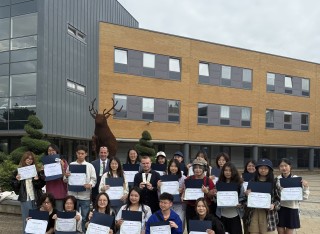
Tim Wray
Academic and research departments
Surrey Business School, Faculty of Arts, Business and Social Sciences.About
Biography
Tim joined the Surrey Business School in 2017 and is a senior lecturer in strategy and international business. Prior to academia Tim worked in the IT industry for 15 years, mainly in channel management roles spanning multi-nationals and small to medium sized firms. Tim was programme leader of International Business Management BSc (2019 to 2025), and is currently co-director of SBS international summer schools.
Teaching
Former modules
- MAN1103: Fundamentals of Business Management
- MAN1091: Business Skills
- MAN1089: Business Decision Making
- MAN3090: International Business Strategy
- MAN3110: Globalisation of Emerging Markets
- MANM010: International HRM (module leader)
Current modules
- MAN1146: Global and Sustainable Business Management
- MAN1144: Business Data Project (module leader)
Publications
Hubristic leaders over-estimate significantly their own abilities and believe their performance to be superior to that of others; as a consequence, they make over-confident and over-ambitious judgements and decisions. The fact that hubristic leaders tend to be resistant to criticism, and invulnerable to and contemptuous of the advice of others further compounds the problem. In this article, we review conceptual, theoretical and methodological aspects of hubristic leadership research. We examine hubristic leadership from two standpoints: first, from a psychological and behavioural perspective, we review hubris in terms of over-confidence and its relationship to core self-evaluation and narcissism; second, from a psychiatric perspective, we review hubris as an acquired disorder with a distinctive set of symptoms (Hubris Syndrome), the onset of which is associated with the acquisition of significant power. In doing so, we draw distinctions between hubris and several related constructs, such as over-confidence, narcissism, core self-evaluation and pride. Methodologically, we review how hubris and Hubris Syndrome can be recognised, diagnosed and researched, and we explore some of the unique challenges and opportunities hubris research presents. We conclude by offering some directions for future inquiry and recapitulate the practical and pedagogical significance of this vitally important but under-researched leadership phenomenon.


